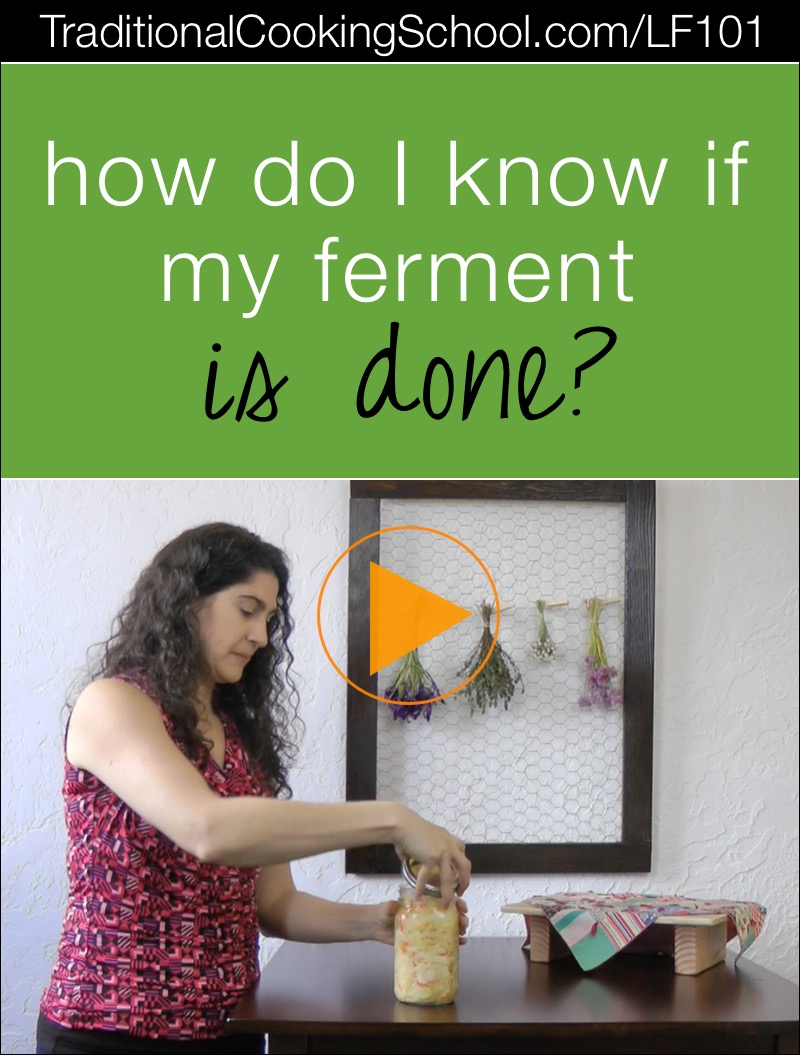
Are you wondering… “How do I know if my ferment is done?”
As the author of The Complete Idiot’s Guide to Fermenting Foods and through teaching Lacto-Fermentation at Traditional Cooking School, I’ve received lots of questions about fermenting over the years.
Are you wondering how much salt to use, what salt to use, how to store ferments, if fermenting is safe, or other fermenting questions? This video series will answer them!
The Lacto-Fermentation 101 Video series today covers…
How Do I Know If My Ferment Is Done?
Your ferment is bubbling away. You are curious. Is it done yet? What does it taste like?
Well, go ahead and open it up and smell and taste it! So much about fermenting is the experience and discovery. No two ferments are going to be exactly alike, just like no two people are going to love the exact same result. This is a flexible process and the best way for you to succeed is to open the jar and see what’s going on in there.
After you’re done checking it, re-pack the jar carefully; then re-submerge the mixture under the brine so it can continue its happy fermenting.
Also keep in mind that your ferment may not act like or turn out just like a recipe states. This is because of all the variables and the possible differences: room temperature, starter culture (or not), the quality of the foods, your personal preferences, etc. You might find that your ferment is done sooner than the recipe calls for — or perhaps longer because you like it better that way! Or you might find you see fewer or more bubbles than the recipe mentions. This is all within the realm of normal.
The more hands-on you are with your ferments, the sooner you’ll be a whiz at knowing just when something is done to your liking. Enjoy and embrace the process!
Typical signs are:
- dimming or brightening of food colors
- sour taste (from acids produced)
- softening of foods (but hopefully still crunchy)
- flavor complexity – think of sauerkraut or a pickles
Links Mentioned
...without giving up the foods you love or spending all day in the kitchen!

2 free books:
Eat God's Way
Ditch the Standard American Diet, get healthier & happier, and save money on groceries...
We only recommend products and services we wholeheartedly endorse. This post may contain special links through which we earn a small commission if you make a purchase (though your price is the same).


When your phone mount is done and you’re storing it cold do the foods need to be completely submerged in salt water such as with pickles?